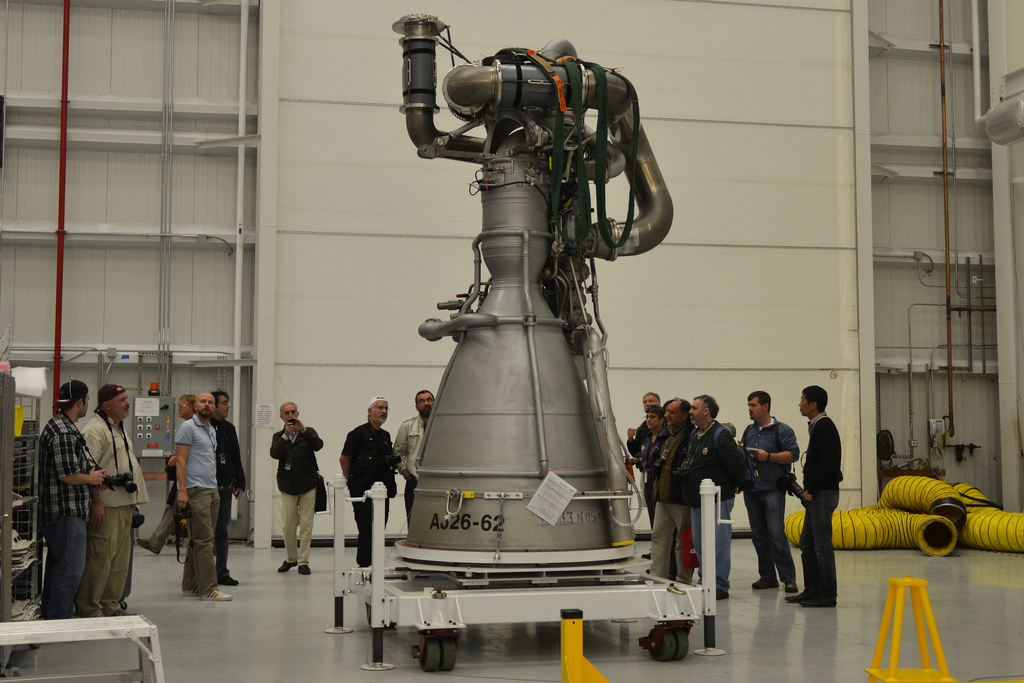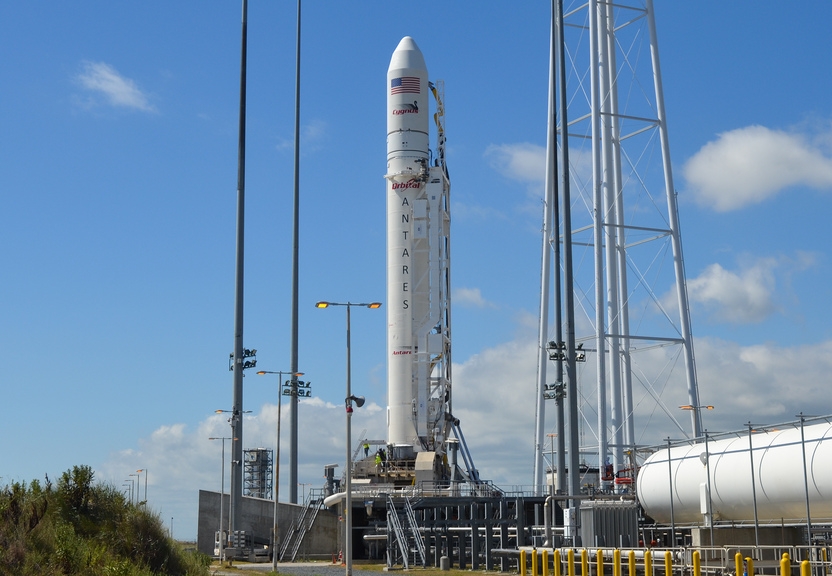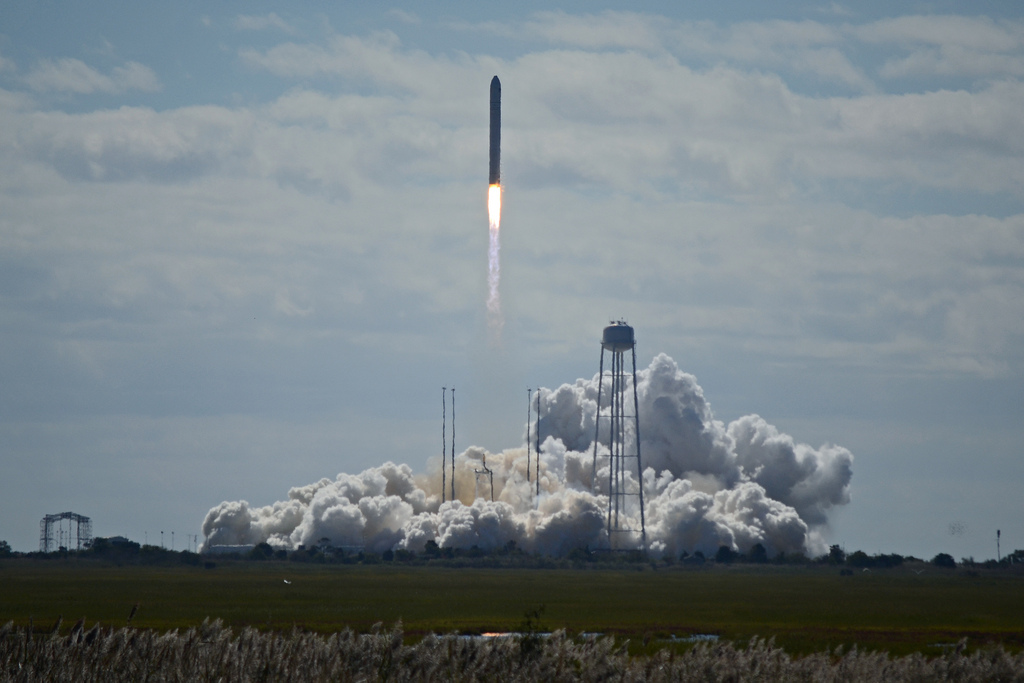October 8, 2013 8:04 pm
Inside the First Launch of Cygnus to the International Space Station
Today’s guest post is again by Elliot Severn, one of StarTalk Radio’s volunteer photographers. You’ve seen his photos of StarTalk Live: The Particle Party and other events. Here, Elliot describes his latest trip to the Wallops Island Launch Facility, this time to watch the Antares launch of the Cygnus cargo logistics spacecraft to the International Space Station for the COTS Demonstration mission. Elliot shot the video below as well. If you would like to see more of Elliot’s photos, click here.
In April, I covered the first test launch of Orbital Sciences Corporation’s Antares rocket from the Mid-Atlantic Regional Spaceport at Wallops Island, Virginia. Now, just five months after proving the launch vehicle, the first Cygnus spacecraft is on its first mission, demonstrating its capability to deliver cargo to the International Space Station. The StarTalk team got an exclusive inside look at launch operations during this historic and critical mission. And this time, we were there to see it go!
The day before launch was packed with media activities. Our day started with a tour of the Horizontal Integration Facility (HIF), where the next Antares rocket is being prepared for the first Cygnus commercial resupply mission (CRS-1) to the International Space Station. The HIF is a large building where the Antares rocket stages and payload are integrated. It serves the same purpose as the Vehicle Assembly Building (VAB) at Kennedy Space Center. But unlike the VAB where the Saturn V and Space Shuttle were stacked vertically, Antares is assembled and transported to the pad in a horizontal position. Once at the pad, the vehicle is erected.
Upon entering the HIF, all the rocket’s components were laid out before us like a giant LEGO set. Arranged from base to top were the first stage engines, the enormous first stage core, the Castor 30A upper stage solid motor, and the interstage ring. We were free to roam the floor and Orbital employees were there to answer questions about the rocket’s components.
The Aerojet AJ-26 engines were especially exciting to see up close. They started their lives as Soviet NK-33 engines that were salvaged from the failed N-1 moon rocket. To this day, they have one of the highest thrust to weight ratios of any liquid fueled rocket engine. Old Russian writing could be found on several parts of the engine, including the engine covers, which had “Taurus II” (the former rocket name) stamped over Cyrillic letters.

One of the two Aerojet AJ-26 engines that power the first stage of Antares. Photo Credit: Elliot Severn.
An unusual part of the Antares design is that the upper stage is powered by a solid rocket motor, which can’t be throttled or shut down in flight. To achieve a proper orbit using this engine, timing is key. There is a long coast phase between stage separation and second stage ignition, so the time of ignition can be adjusted to reach the desired orbit.
After touring the HIF, we were taken out to the launch complex to view Antares on the pad. Our group had to stop to view the rocket a few hundred yards from the pad because the spacecraft was loaded with hydrazine propellant, which is really nasty stuff. However, those of us setting up remote cameras were allowed to enter the pad perimeter with a security escort. Soon, just a few of us were standing at the base of the pad, gazing up at the 133ft tall rocket. While enjoying the view, it was time to get to work. For my remote camera setup, I used a Nikon D3100 mounted inside a mailbox for weather and debris protection. Sound triggers are most popular among spaceflight photographers, but I decided to use a timer since the launch window was very narrow. Camera placement is was the most difficult part. You want to get a good frame, but you also don’t want your camera to be blown away or blinded by the exhaust. After a wonderful time at the pad, we headed back to the NASA visitor center for the pre-flight press conference.

Antares on the pad during remote camera setup. Note the workers at the base for scale. Photo Credit: Elliot Severn.
At the press conference, NASA and Orbital officials announced that the vehicle was ready and the weather forecast for launch day was very favorable. Their main concern this time was range safety. Some homes near the launch site would need to be evacuated before launch, in case of a launch failure. This is because if the rocket exploded, the shock wave at certain distances could shatter glass, causing injuries similar to the Chelyabinsk meteor incident earlier this year. However, people living this close would likely be standing outside to watch the launch if they weren’t away at work.
Afterwards, an informal gathering was arranged for the media to learn some more technical details about the mission that weren’t included in the press conference. While Cygnus is an American vehicle, many of its components are built by international partner companies. Representatives from each manufacturer came to give us a presentation and Q&A. The solar arrays are built by Dutch Space and the Pressurized Cargo Module is manufactured by Thales Alenia Space of Italy, who built all the pressurized containers for the Space Shuttle, ESA’s Automated Transfer Vehicle, and several of the modules on the International Space Station. After the presentations, we were all invited to view a full-scale mockup of Cygnus, which was on display in the parking lot of the Chincoteague Community Center.
The next morning, Sept. 18th, we boarded buses, got the usual safety briefing (get in the bus if the rocket blows up), and headed out to the press site. It was a beautiful day and the minutes ticked by quickly as the countdown proceeded smoothly. Time seemed to stand still in the last 30 seconds of the count. Finally, the engines ignited and the pad filled with a plume of steam. Antares slowly rose off the pad, exposing a bright yellow flame that faded into blue. As it cleared the pad, the powerful rumbling and crackling began and the flame looked as bright as a road flare. Unlike other rockets that use solid rocket boosters, it appeared to ascend very slowly and left behind no visible smoke trail. As it rose almost directly overhead and into the sun, Antares passed through a pocket of air that produced a dazzling contrail. It was visible through binoculars all the way up to stage separation as it disappeared into a clear blue sky.
Cygnus had to abort its first approach to the ISS because of a data link error. The issue was resolved quickly, but the rendezvous was then delayed to make way for the arrival of three crew members on a Soyuz spacecraft. It wouldn’t be until Sept. 29th that Cygnus could finally be captured by the station’s robotic arm and berthed to the station successfully. Cygnus will remain on the ISS for a few weeks before being filled with trash and burned up in the atmosphere. Orbital is on track for the CRS-1 mission in December.
Get the most out of StarTalk!
Ad-Free Audio Downloads
Priority Cosmic Queries
Patreon Exclusive AMAs
Signed Books from Neil
Live Streams with Neil
Learn the Meaning of Life
...and much more


 Become a Patron
Become a Patron

